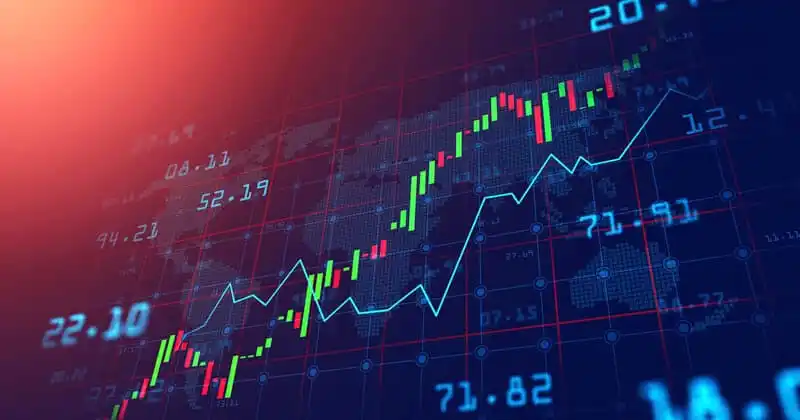financialtreat – will explain about the Technical Analysis of Stocks and Trends that you will get in the following article. let’s look at this article carefully!
Technical analysis is the study of historical market data, including price and volume. Using insights from market psychology, behavioral economics, and quantitative analysis, technical analysts aim to use past performance to predict future market behavior. The two most common forms of technical analysis are chart patterns and technical (statistical) indicators.
What Does Technical Analysis Tell You?
Technical analysis is a blanket term for a variety of strategies that depend on interpretation of price action in a stock. Most analysis technical is focused on determining whether or not a current trend will continue and, if not, when it will reverse.
Some technical analysts swear by trendlines, others use candlestick formations, and yet others prefer bands and boxes created through a mathematical visualization. Most technical analysts use some combination of tools to recognize potential entry and exit points for trades.
A chart formation may indicate an entry point for a short seller, for example, but the trader will look at moving averages for different time periods to confirm that a breakdown is likely.
A Brief History of Technical Analysis
The technical analysis of stocks and trends has been used for hundreds of years. In Europe, Joseph de la Vega adopted early analysis technical techniques to predict Dutch markets in the 17th century. In its modern form, however, technical analysis owes heavily to Charles Dow, William P. Hamilton, Robert Rhea, Edson Gould, and many others—including a ballroom dancer named Nicolas Darvas.
These people represented a new perspective on the market as a tide that is best measured in highs and lows on a chart rather than by the particulars of the underlying company. The diverse collection of theories from early technical analysts were brought together and formalized in 1948 with the publishing of Analysis technical of Stock Trends by Robert D. Edwards and John Magee.
Candlestick patterns date back to Japanese merchants eager to detect trading patterns for their rice harvests. Studying these ancient patterns became popular in the 1990s in the U.S. with the advent of internet day trading. Investors analyzed historical stock charts eager to discover new patterns for use when recommending trades.
Candlestick reversal patterns in particular are critically important for investors to identify, and there are several other commonly used candlestick charting patterns. The doji and the engulfing pattern are all used to predict an imminent bearish reversal.
How to Use Technical Analysis
The core principle underlying technical analysis is that the market price reflects all available information that could impact a market. As a result, there’s no need to look at economic, fundamental, or new developments since they’re already price into a given security.
Technical analysts generally believe that prices move in trends and history tends to repeat itself when it comes to the market’s overall psychology. The two major types of technical are chart patterns and technical (statistical) indicators.
Chart patterns are a subjective form of technical analysis where technicians attempt to identify areas of support and resistance on a chart by looking at specific patterns. These patterns, underpinned by psychological factors, are designe to predict where prices are heade, following a breakout or breakdown from a specific price point and time.
For example, an ascending triangle chart pattern is a bullish chart pattern that shows a key area of resistance. A breakout from this resistance could lead to a significant, high-volume move higher.
Technical indicators are a statistical form of analysis technical where technicians apply various mathematical formulas to prices and volumes. The most common technical indicators are moving averages, which smooth price data to help make it easier to spot trends.
More complex technical indicators include the moving average convergence divergence (MACD), which looks at the interplay between several moving averages. Many trading systems are base on technical indicators since they can be quantitatively calculate.
The Difference Between Technical Analysis and Fundamental Analysis
Fundamental analysis and analysis technical are the two big factions in finance. Whereas technical analysts believe the best approach is to follow the trend as it forms through market action, fundamental analysts believe the market often overlooks value.
Fundamental analysts will ignore chart trends in favor of digging through the balance sheet. And the market profile of a company in search of intrinsic value not currently reflecte in the price. There are many examples of successful investors using fundamental. Or technical analysis to guide their trading and even those who incorporate elements of both.
On the whole, however, this analysis lends itself to a faster investing pace. Whereas fundamental analysis generally has a longer decision timeline and holding period. By virtue of the time require for the extra due diligence.
Read more financial service:
- How Payment Gateway Works Along With Examples, Let’s Check It Out!
- Digital Savings That Offer Many Advantages And Easy Way to Join
Limitations of Technical Analysis
analysis has the same limitation of any strategy base on particular trade triggers. The chart can be misinterprete. The formation may be predicate on low volume. The periods being use for the moving averages may be too long. Or too short for the type of trade you are looking to make. Leaving those aside, the analysis of stocks and trends has a fascinating limitation unique to itself.
As more analysis strategies, tools, and techniques become widely adopte, these have a material impact on the price action. For example, are those three black crows forming because the price-in information is justifying a bearish reversal. Or because traders universally agree that they should be followe by. A bearish reversal and bring that about by taking up short positions?
Thus the article on Technical Analysis of Stocks and Trends. So I Hopefully it will be useful for you and that’s all thanks.
